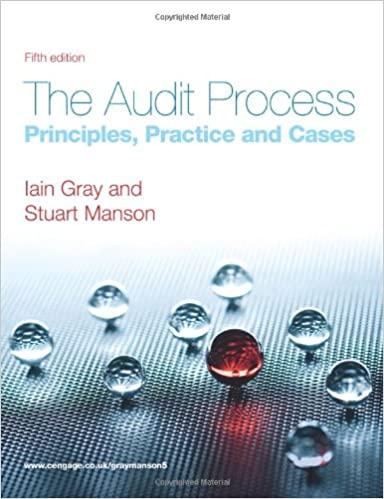Question
Here are the Journal entires it is asking for: 1)Received Lees payment for principal and interest on the note dated December 13. Assume no reversing

Here are the Journal entires it is asking for:
1)Received Lees payment for principal and interest on the note dated December 13. Assume no reversing entries were prepared.
2) Accepted a $18,000, 10%, 90-day note in granting a time extension on the past-due account receivable of Tomas Company.
3) Accepted a $21,000, 30-day, 8% note in granting H. Cheng a time extension on his past-due account receivable.
4) H. Cheng dishonored his note.
5) Wrote off the H. Cheng account against the Allowance for Doubtful Accounts.
6) Received the Tomas payment for principal and interest on the note dated March 3.
Thank you!
Following are transactions of Danica Company. December 13 Accepted a $24,000,45-day, 6% note in granting Miranda Lee a time extension on her past-due account receivable. December 31 Prepared an adjusting entry to record the accrued interest on the Lee note. anuary 27 Received Lee's payment for principal and interest on the note dated December 13. March 3 Accepted a $18,000,10%, 90 -day note in granting a time extension on the past-due account receivable of Toma Company March 17 Accepted a $21,000,30-day, 8% note in granting H. Cheng a time extension on his past-due account receivable April 16 H. Cheng dishonored his note. May 1 Wrote off the H. Cheng account against the Allowance for Doubtful Accounts. June 1 Received the Tomas payment for principal and interest on the note dated March 3. Somplete the table to calculate the interest amounts and use those calculated values to prepare your journal entries. (Do not round hermediate calculations. Use 360 days a year.) Complete this question by entering your answers in the tabs below. Use those calculated values to prepare your journal entries. Journal entry worksheet Received Lee's payment for principal and interest on the note dated December 13. Assume no reversing entries were prepared. Note: Enter debits before credits. Following are transactions of Danica Company. December 13 Accepted a $24,000,45-day, 6% note in granting Miranda Lee a time extension on her past-due account receivable. December 31 Prepared an adjusting entry to record the accrued interest on the Lee note. anuary 27 Received Lee's payment for principal and interest on the note dated December 13. March 3 Accepted a $18,000,10%, 90 -day note in granting a time extension on the past-due account receivable of Toma Company March 17 Accepted a $21,000,30-day, 8% note in granting H. Cheng a time extension on his past-due account receivable April 16 H. Cheng dishonored his note. May 1 Wrote off the H. Cheng account against the Allowance for Doubtful Accounts. June 1 Received the Tomas payment for principal and interest on the note dated March 3. Somplete the table to calculate the interest amounts and use those calculated values to prepare your journal entries. (Do not round hermediate calculations. Use 360 days a year.) Complete this question by entering your answers in the tabs below. Use those calculated values to prepare your journal entries. Journal entry worksheet Received Lee's payment for principal and interest on the note dated December 13. Assume no reversing entries were prepared. Note: Enter debits before creditsStep by Step Solution
There are 3 Steps involved in it
Step: 1

Get Instant Access to Expert-Tailored Solutions
See step-by-step solutions with expert insights and AI powered tools for academic success
Step: 2

Step: 3

Ace Your Homework with AI
Get the answers you need in no time with our AI-driven, step-by-step assistance
Get Started


